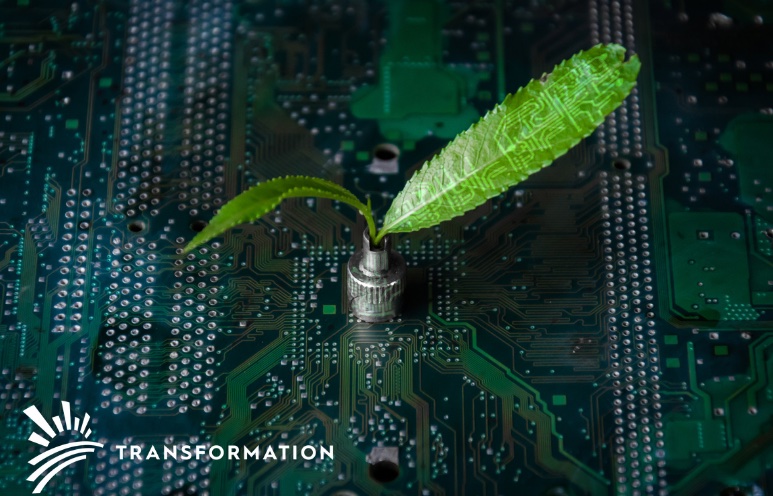What is Sustainable Technology?
In order to understand sustainable technology, it is important to first understand what sustainability means. Sustainable development is the process of meeting human needs while preserving the environment so that future generations can also meet their needs. There are three components to sustainable development: environmental, social, and economic.
Accelerating technology development and deployment is critical to mitigating climate change and achieving sustainable development goals. There are a number of technologies that have the potential to make significant contributions in this regard, but some receive more attention than others. Here we profile three technologies that we believe have great potential for making sustainable impact: electric vehicles, advanced nuclear power, and waste-to-energy conversion. Each has unique strengths and weaknesses – but all could play an important role in helping us build a more sustainable world.
For a business, it is a “must-do” thing in the modern era. We can expect major social, economic, and environmental change only when sustainable development becomes a mandatory thing.
We have been doing harm to the environment in the past few decades, and the time has come when it has to stop. It will be for the good of future generations. We can clearly see the negative impacts of climatic changes.
Even if there has been great damage has already happened, it will be corrected and restored as we will use less harmful and sustainable methods in the long run.
Industries have a bigger responsibility
When we say that sustainable development is everybody’s responsibility, the industries share Lion’s share. It is because industries contribute the maximum to the environmental loss. Their adverse environmental impact is well-known.
Sometimes, it is difficult to quantify it because the understanding of the baselines is not very clear.
Thankfully, technology has answers to all the questions. It can increase productivity. It can help in reducing waste, and it can use resources more effectively and economically.
Thus, your business will put the least impact on the environment.
Fortunately, technical advancement has made things sustainable. Here are some examples.
Long-lasting batteries
When we say that solar or wind energies are examples of sustainable sources, we should keep the importance of long-lasting batteries also. Lithium-ion batteries are good because they address the short-term storage requirements. However, we need good and robust long-term storage batteries. Long-term storage reduces the cost of underutilization of assets.
Several technical innovations are being tried out. Low-cost thermal batteries, and adding storage to solar panels, are a few examples.
However, we should not forget that as the cheap energy storages become widely accessible, the utilities will need to adapt to the new technology. This change has to happen fast.
As consumers start generating their own energy, the billing structure has to get adjusted accordingly. A revised grid-planning approach should be adopted.
Use of LED lights
Conventional fluorescent lights or CFL technology are not considered good in terms of environment-friendliness and sustainability. Modern energy-efficient LED lights are very rapidly replacing these traditional options worldwide.
Estimates say that by 2030, almost 90 percent of lights will be LED. They are very much efficient in energy saving. Statistics say that energy consumption comes down by almost 40 percent when you use LED lights. It is a huge saving.
With more use of LEDs, not only the savings will be higher.
Increased use of solar power
With the advancement in technology, renewable energy become cheaper and more accessible. Countries in the whole world are promoting solar energy. It could be a great alternative source of energy in countries where there is bright sunshine almost the whole year. It can bring cheap and convenient energy to the millions of people who are deprived of electricity.
To encourage the generation of solar energy, more innovative financial plans are needed. They will make the currently less affordable solar home systems a smart solution. It will help those people also who have been deprived of till date from this sustainable energy source.
Precision agriculture and indoor farming
The availability of land is a big issue. Agriculture requires a lot of lands. In densely populated countries, it is becoming difficult to fulfill the needs of the increasing population. Hence, indoor farming and precision agriculture could become an excellent alternative with the use of modern technology
Indoor farms do not need much land and they are much more efficient than traditional farming. Plus, it reduces the destruction of habitat.
Since it is done in controlled climatic conditions, they can produce seasonal crops all year round. It is especially useful when the demand increases.
Precision agriculture uses technology to make farming highly controlled and precise. Use of sensors, harvesting vehicles, and other advanced methods is one good solution to the food problem.
Use of Big Data Analytics
Did you wonder how can Big Data Analytics help in increasing sustainability? Yes, undoubtedly it is a tool for online marketing. However, it can throw very much useful insight for improving sustainability. When huge pools of data are collected and analyzed, industries have better information about the environmental concerns.
When you know the problem, it becomes easy to find out solutions. The energy usage can be understood better and Big Data can be used for highlighting areas that require greater efficiency.
With deep insight, a business can build a robust picture of the ecological footprint. It can calculate the risks to the environment more precisely and find out methods to reduce them.
Promoting electric-powered public transport
There has been a great emphasis on individual electric vehicles in recent years. Indeed, that is one of the unique and quite useful changes that technology has brought.
However, more benefits can be obtained when public transport uses electrically powered vehicles. In countries like China, thousands of electric buses run on the streets daily. In developed and developing countries they are becoming highly popular. With the widespread adoption of these vehicles, two big benefits will be achieved. First, they will reduce the carbon footprint to a great extent. Studies have shown a significant drop in Sox, NOx, and CO2 emissions where electric buses are prevalent. Secondly, they will greatly reduce the dependency on fossil fuels.
Both these things are good for sustainable development.
Right now, the procurement cost is higher because of the upfront battery cost. But with the advancement in technology, the prices will drop, and the buses will become more affordable.
Electric buses will play a major role in improving the sustainability and better energy use.
Conclusion
Thus, technology is the main driving force behind sustainable development. As further innovations will happen and new things will come up, the scenario will change completely. Technology will be a key enabler in the transition process. Hence, the supporting infrastructure has to be one step up.





Leave a Reply